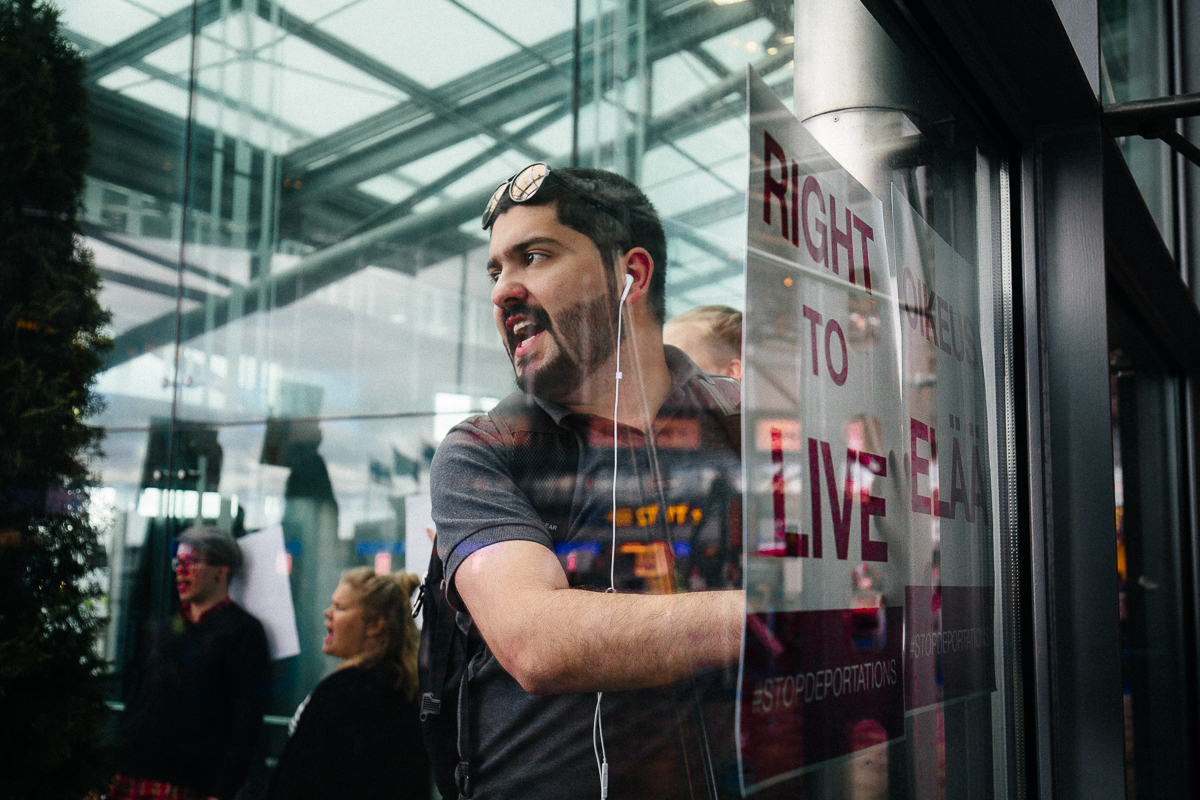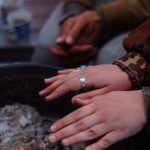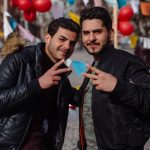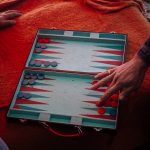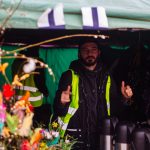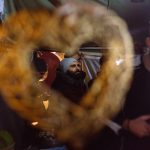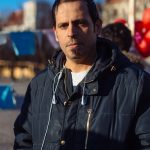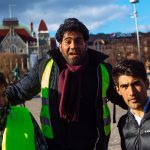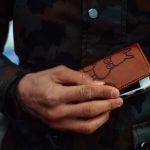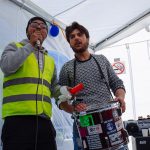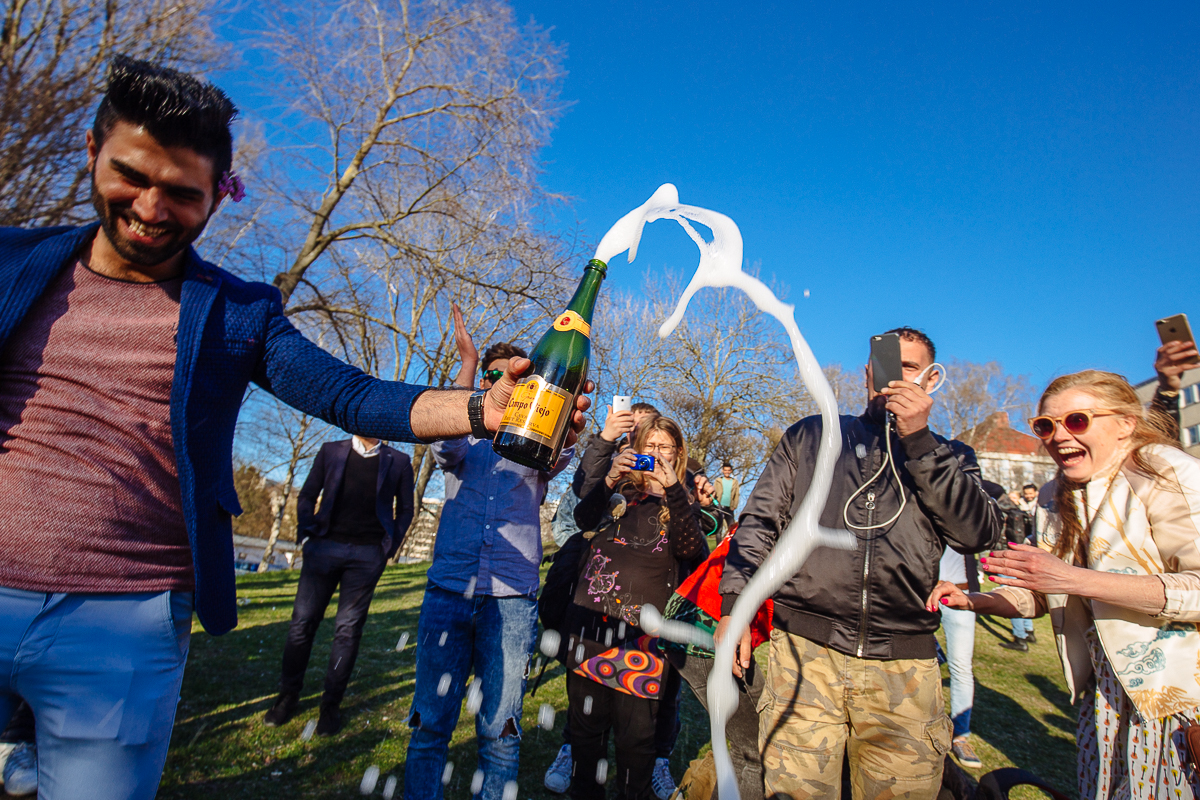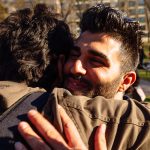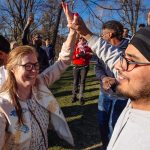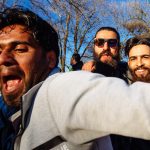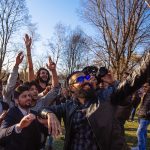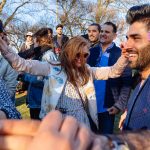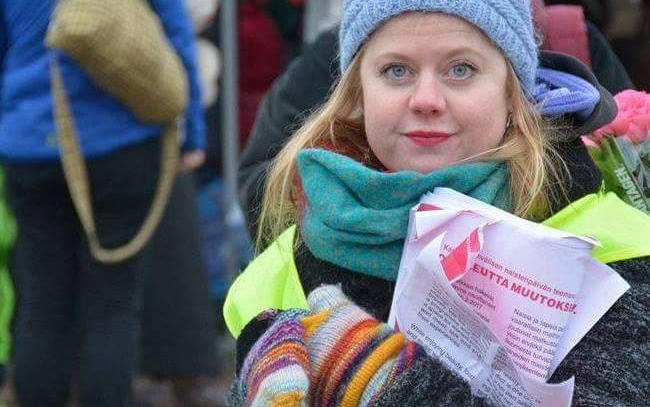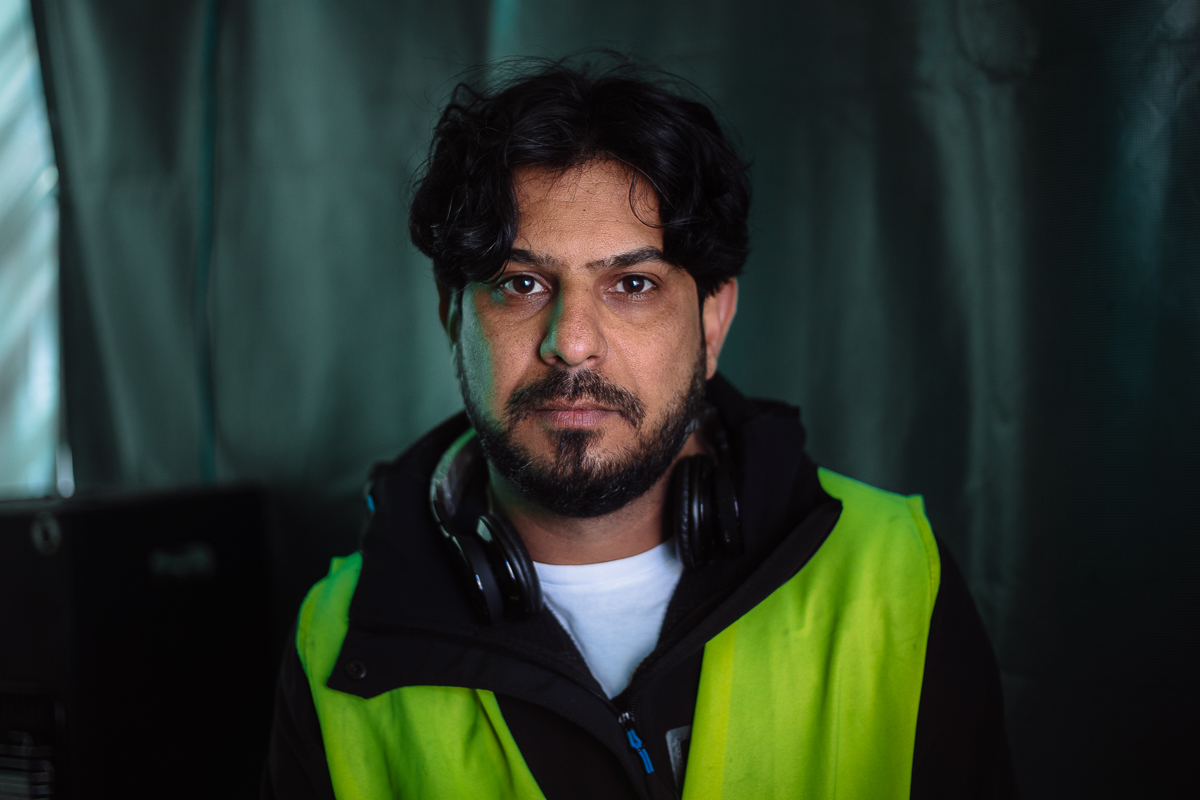If I have to define the life in Finland in two words, it would be peace and stability. Life here doesn’t have any significant ups and downs.
The events around asylum seekers’ have an extreme contrast with calm life in Finland. A new person who sees the demonstration would tell that it looks like everyone is having a good time at a party, but there is also an opposite, very sad side. If someone gets to know the people at the demonstration better, they would notice the unease behind the smile.

On 20th of May, the non-stop asylum seekers’ demonstration is turning 100 days and there are no signs that it will end. They continue to struggle for better migration policies.
For many visitors, the demonstration seems to have become not only a way to show their support. It became a place where they can go at any time, sit next to the fire and share their stories. Supporters tell that it is a place of friendship and unity.
So, before actually starting the post, I would like to thank people of Finland and everyone, who directed the protest into such a peaceful, positive gathering.
In this post
Since the last post, I took a much deeper look into the migration crisis and happenings around the demonstration.
There has been some positive news, which made me hope for a peaceful resolution of the crisis. At the same time, it pains me to cover the sad events, which are going to be the harshest things I have ever written about.
In this second part of the refugee’s crisis series, I will explain the current status of the asylum seekers’ protest. At the beginning, I will be including a lot of images, to make the reader understand what the place looks like. Further into the post, I will include interviews with asylum seekers and their supporters.
(All photos are made by me unless other mentioned. The post contains high-resolution images and may take some time to load.)
What is the asylum seekers’ demonstration in Finland like?

I find it difficult to describe the atmosphere at the demonstration. It is extremely changing, some sort of mix of joy and desperation.
Everyone is having an amazing time and little steps towards the resolution of the crisis give people hope. All until the next deportation or negative asylum decision comes. When it happens, people gather around to support with what they can.
Positive…
I wouldn’t be able to describe the demonstration better than one of the everyday attendees could:
“Can you name any place in Finland, where you can drop by at any time, have a cup of tea and feel so welcome? Here people sit together and talk like old friends. Something like this had to be organized in Finland long time ago!”
Do you remember talking to a stranger next to a bonfire? How easy was it? Certain places just have an atmosphere that creates the friendship. The organizers of the demonstrations have managed to reproduce it. If there has to be a protest, I don’t think that it could be organized any better.
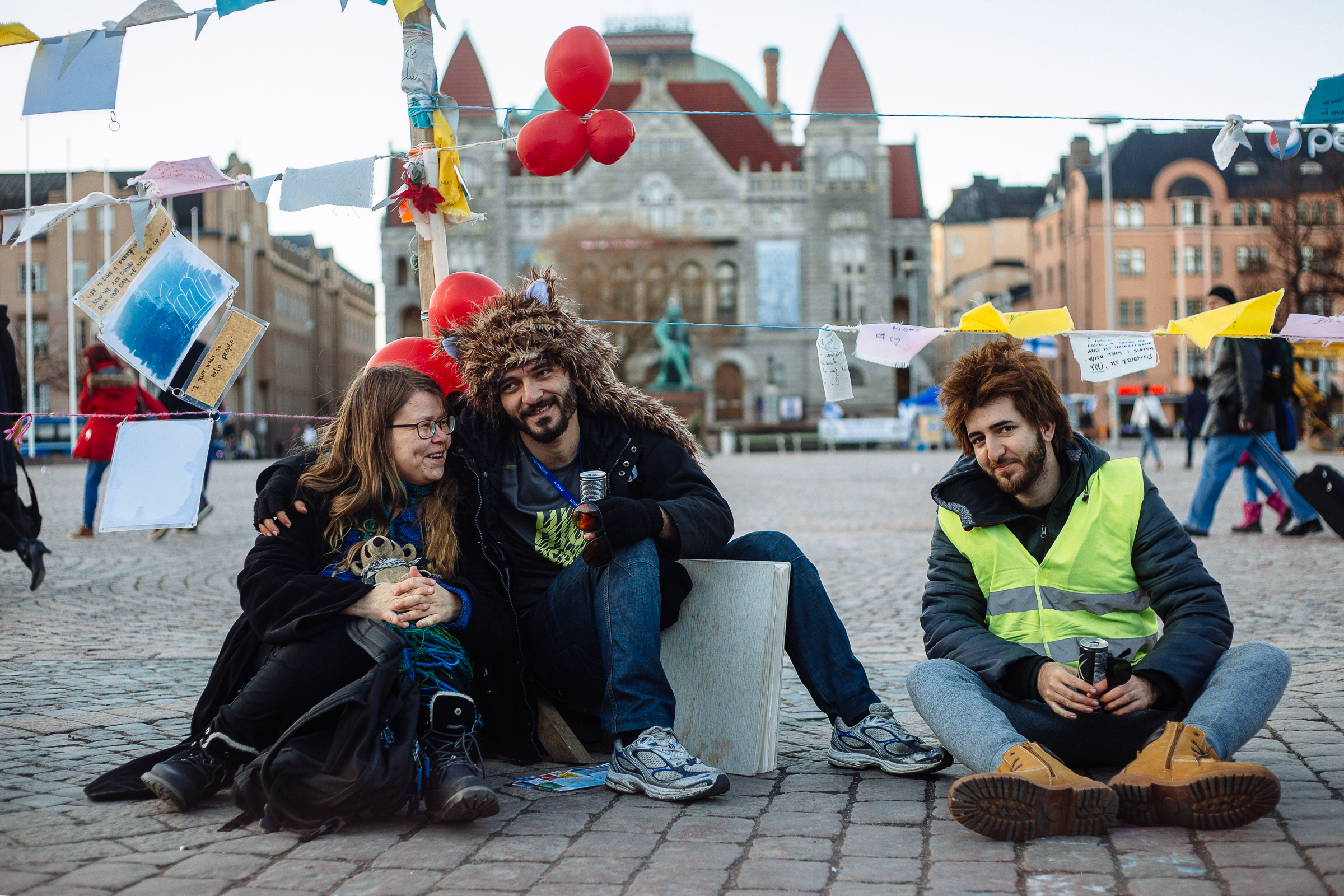
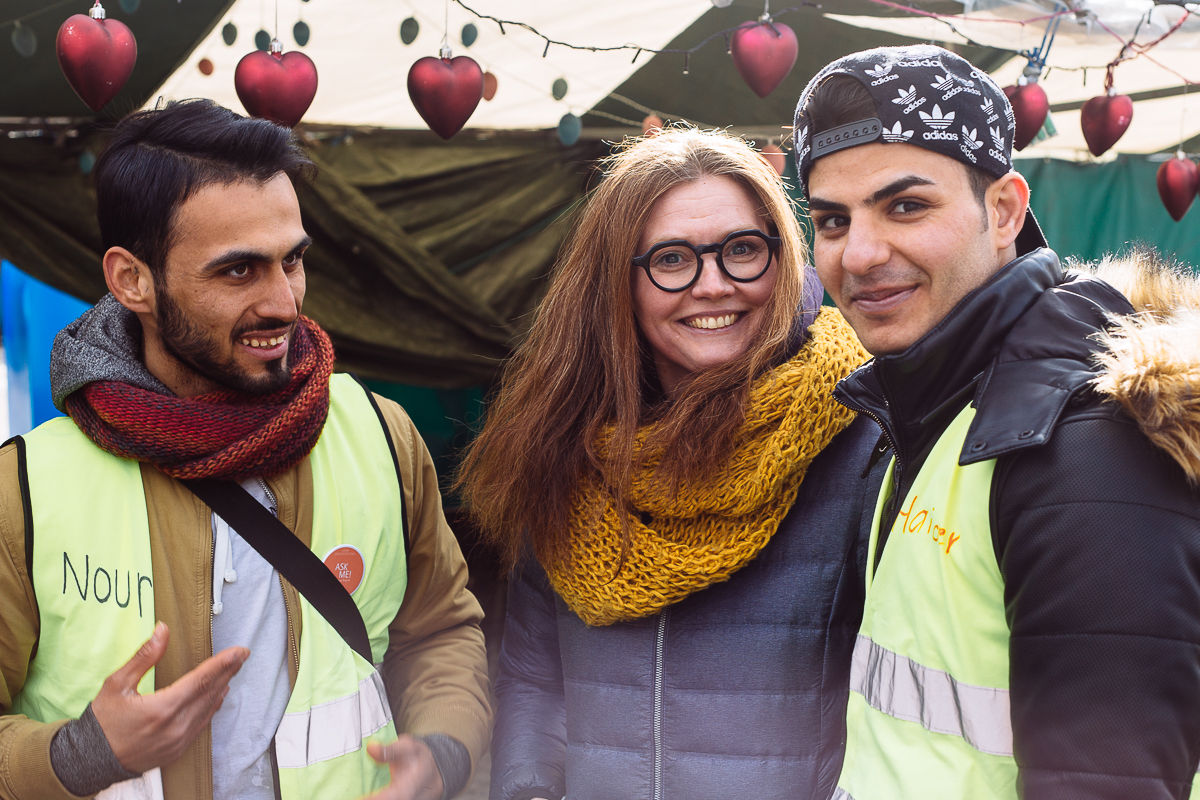

Probably one of the strongest events was an engagement party of one of the asylum seekers and a young woman from Finland. I have almost forgotten how loud such events could be.

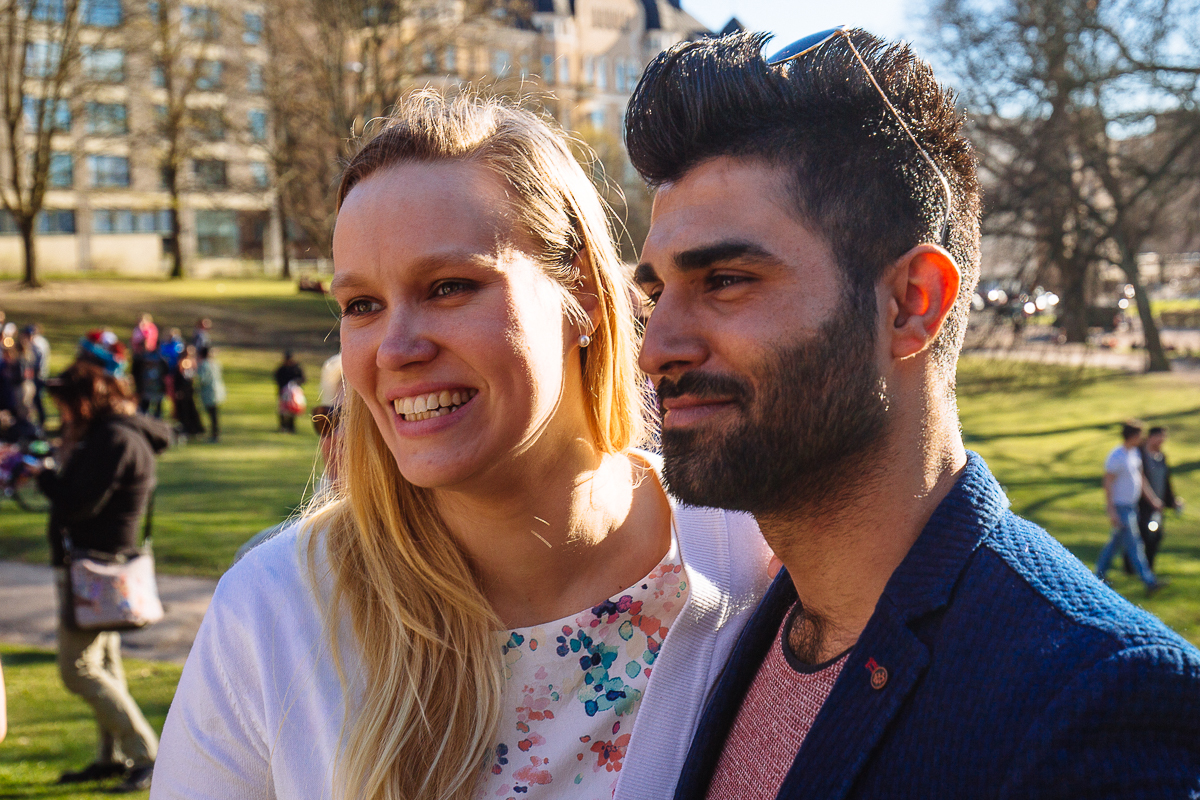

…and sad
One of the harshest cases was told by a senior couple that I met there. They were living in the reception center together with their son. The uncertainty about the future was bringing an extreme amount of stress onto them. One of the supporters told, that because of stress, their son’s blood pressure went over 200, which resulted in hospitalization. He had spent 3 days in a coma and 12 days in the hospital overall. At the same time, the couple (husband 59, wife 50) got the negative decision on asylum and received the letter, notifying that they could no longer stay in the reception center.
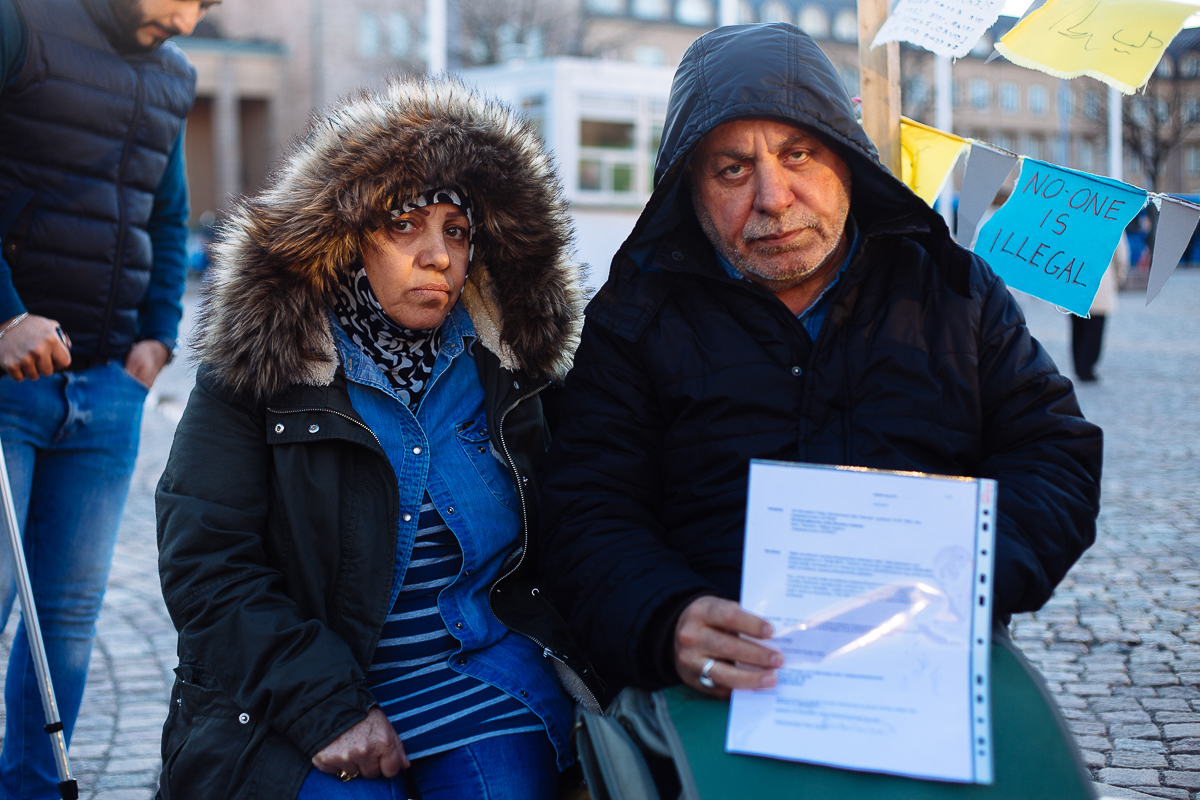
Uncertainty, negative decisions, and the painful experiences of people next to you made some of the asylum seekers lose their motivation. One of them claimed: “At the beginning, I was trying my best to learn Finnish and adapt to life in Finland, but now I don’t know. My friend already speaks the language well, he was working and paying taxes for a long time. And then he received a negative decision…”
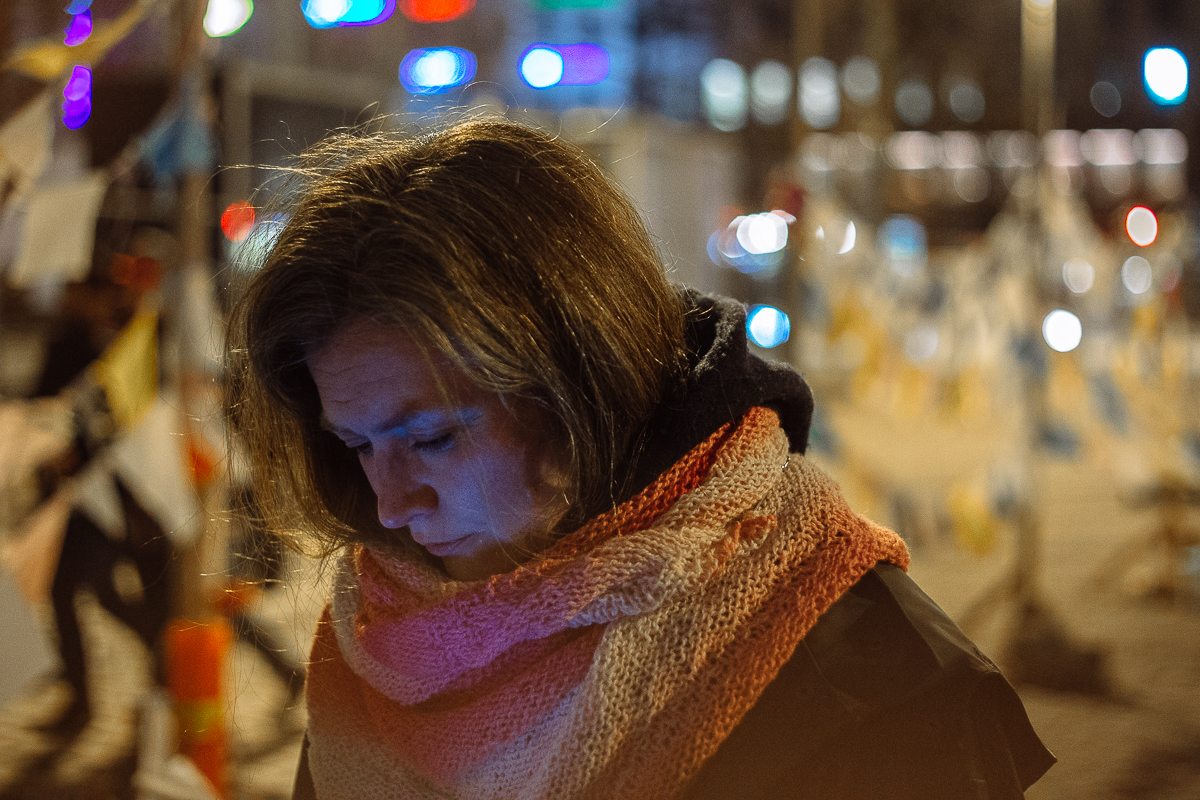
Interviews with activists
To get more clarity about the asylum seeker’s position I have interviewed two activists. Outi will tell about the actions activists take and Erna will give general information about legal rights the asylum seekers are entitled to.
Outi Popp
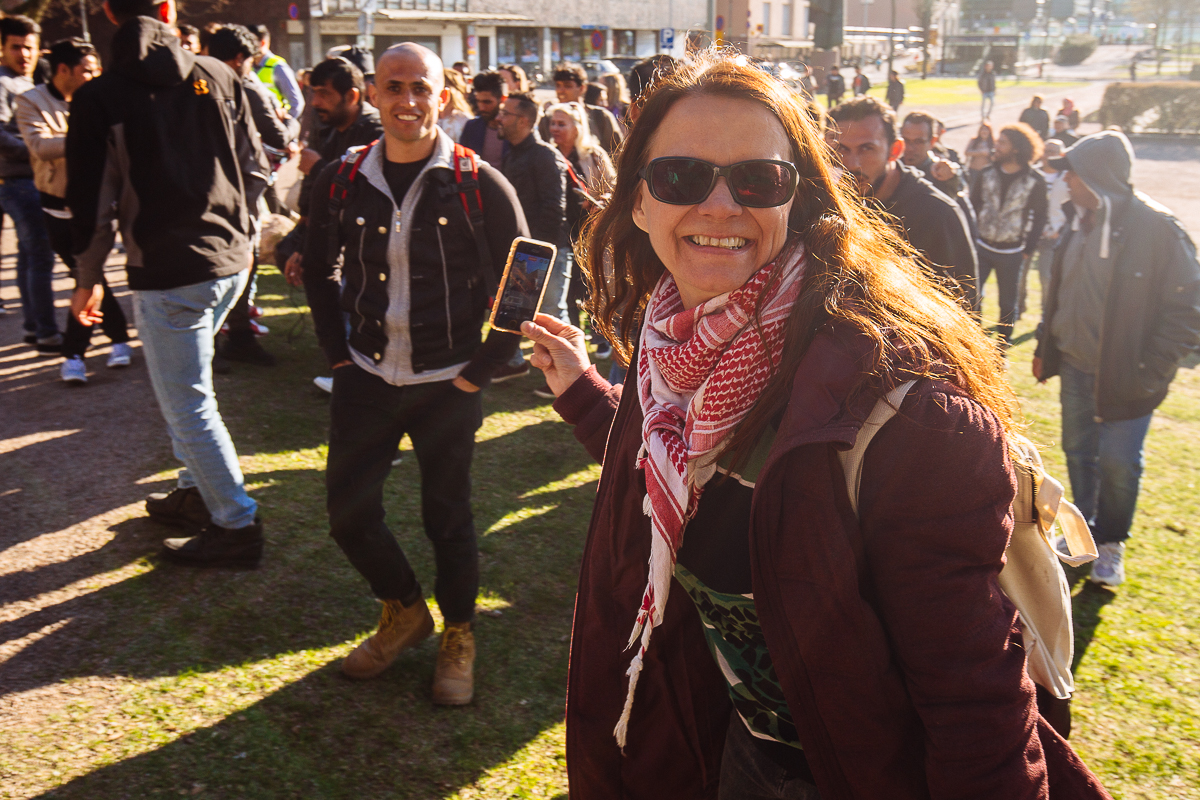
Journalist and playwright. Human rights activist. Text interview.
How do you support the asylum seekers? What do the activists do?
First of all, we help the asylum seekers personally here at the demonstration tent. They need help with the documents and legal help in courts, we help them with finding work and a place to stay. We visit them at the detention centers trying to provide support. We help in handling the demonstration at Helsinki Railway Square. We get small donations from private citizens to support the demonstrations’ needs. To pay transportation costs, daily meals and coal.
Another important thing we do is bringing the message to Finland. Myself, as a spokesperson, I operate with media. Others lobby politicians and decision makers.
What kind of impact did you make?
There have been wins and losses. Unfortunately, we cannot do much about deportations in general, but citizen’s action has had an impact on deportations, carried in last months. On April 3, 50 people were supposed to be deported to Afghanistan, but only 10 were deported. In May, instead of 40 people, they sent back 10 Afghanis.
I think the demonstration has succeeded in bringing the attention to people of Finland and the government. The government now is forced to the discussion. Even the former Finnish president told that deportations should be stopped. We got support from professional communities of lawyers, doctors, interpreters, scientists, researchers, and artists. All churches support the asylum seekers.
What are the next plans?
We will continue our lobby with politicians, continue bringing attention to the society and help refugees. The positive signs make us believe we can bring improvements in Finnish immigration practices and processes. These have been the main goals of the demo: to stop deportations and re-evaluate Migri’s decisions. We need to give hope to this people, here in the demonstration a lot of our friends have got negative asylum decision.
Do you have anything to add?
Courage. The asylum seekers had the courage to come out from reception centers to the center of Helsinki, to a very historical spot. They are now seen as people, not just as numbers in reports. There have been efforts to move the demonstration from this central spot, but we are trying to stay here because now the asylum seekers know the way here and feel that it’s their asylum.
One thing I want to add. In 2015 our prime minister welcomed refugees, even offered his home to them. The asylum seekers heard it and thought Finland gives them safety. At that time around 70% of the Iraqi asylum seekers received positive decisions. Now in 2017 around 70% of decisions are negative. So it looks like there is political pressure to make negative decisions rather than to evaluate the personal reasons of every asylum seeker and consider the human rights aspect. Those people are now, as we speak, being deported from Finland to Iraq and Afghanistan, which are not safe. So we resist.
In whole Europe, the right wing has been on the rise. We believe that they played their role. But we already saw some changes in municipality elections, when the anti-immigrant Finns party lost big time, and we expect changes in general elections 2019 too.
Erna Bodström
Migration researcher at Helsinki University. Text interview. (Photo provided by Erna.)
Let’s start with the very basics. In general, what is the legal framework behind the asylum claim? Why are courtiers accepting refugees?
The Geneva Convention and its different versions. The countries that have signed it must accept and examine asylum claims.
Can a country in EU refuse to accept asylum seekers? Who defines the amount of the seekers they need to accept?
All the countries in the EU have signed the Geneva Convention, so they can’t. The EU also has own regulations about asylum seekers. Everyone has the right to seek asylum and the countries can’t deny that right based on e.g. numbers without breaking the agreement.
Refugee quotas refer to the people, hand-picked by countries, straight from the refugee camps outside Europe. It’s facilitated by the UN. For this, the countries can decide how many refugees they accept, but they can’t decide on those who come to their countries to seek asylum.
What are the different phases of the application process once an asylum seeker arrives in Finland? What is the information asylum seekers need to provide?
In the first asylum application it usually goes like this:
- The asylum seeker makes the asylum application with the police.
- Migri calls them for an interview. They usually have one interview, but can also have many.
- The asylum seeker is informed about the decision, usually either by Migri or the police.
- If the asylum seeker is unhappy with the decision, they (with the help of a lawyer) can make an appeal the Administrative Court.
- The Administrative Court makes a decision. They can choose to hear the asylum seeker before making the decision, but this is rare. They can either resend the application to Migri with stating that the seeker should be given asylum or that the application should be reprocessed, or they can reject the appeal. At this point, the decision is valid and if the asylum application has been rejected, the asylum seeker can potentially be deported.
- If the asylum seeker is unhappy with the decision, they (and their lawyer) can apply for a permission to complain to the Supreme Administrative Court. It is very rare that the SAC gives permission to complain.
Which rights are asylum seekers entitled to, while their application is being processed?
In Finland, they are entitled to basic up keeping and medical services. Children have a right and obligation to go to school.
But this varies from country to country.
What happens with asylum seeker in a case of rejection? Can they re-apply?
If an asylum application is rejected, the applicant has the right to appeal. The decision only becomes valid after the appeal has been processed (or if they don’t appeal within the set time frame). They can re-apply or ask for a permission to appeal to the Supreme Administrative Court. Otherwise, if the application has been rejected twice, they can:
- Return to their country voluntarily
- Try to get a residence permit on other grounds (work, studies, marriage),
- Stay in Finland without a residence permit,
- Go somewhere else.
How does the family reunion for an asylum seeker works?
It works like the family reunion for any other foreigner living in Finland, with the exception that if the asylum seeker succeeds in starting the process within three months, they don’t have to meet the income limitations. Family reunification can only be applied to a spouse and underage children or, if the asylum seeker is underage, to their parents.
Can’t the principle of resettlement take place instead of sending asylum seekers back to their original countries?
Finland can only send them to their country of citizenship. Technically an asylum seeker can also choose to return to another country, but only if that country is willing to accept them.
Interviews with asylum seekers
I did not expect it to be so hard to get the answers. Many of asylum seekers tell that they received threats at their homeland and putting their interview with a photo publicly could expose them to danger.
I would like to thank the ones that agreed to provide full information.
I have asked 5 similar questions from 7 asylum seeekers.
1. Sadiq Bahrooz
The story of Sadiq was originally published by Kati Mayfield and the link was provided by Sadiq when I sent interview questions. Since the story there perfectly answers the questions, it is copied from Kati’s website and posted with Sadiq’s corrections to keep it up to date.
Tell us about your life before you left your country?
When I was 20 years old I began working with foreigners in my home country of Afghanistan, first as an electrician for a German foreign aid project, and then in the American Embassy as a translator and an electrician.
When I was 23 years old I received my first death threat from the Taliban, who targeted me for my involvement with foreigners. Over the course of the next month and a half, I received two more direct threats on my life.
What kind of circumstances made you leave your country?
At the age of 24 I fled Afghanistan and the Taliban threat. For 45 days I journeyed through 11 countries, enduring the terrible horrors of sea and land crossings which many refugees faced and which have become all-too-familiar to all of you.
Why did you choose Finland?
2 reason why I have chosen Finland. The main reason I thought Finland has a small population and there is a high possibility to get asylum, second reason because Finland had the best educational system in the world and I wanted to continue my education.
What is your current status in Finland?
Eager to start my life in Finland I began to learn the language; volunteered with various organizations; and learned coding skills so that I can have job prospects in the high-tech future. I even started laying the foundation for a business I hoped to start here, which would help integrate fellow refugees and asylum seekers into the local economy.
But unfortunately, my application for asylum was denied by the Finnish government. That decision means that the respite and security which I enjoyed for the past nineteen months is in jeopardy.
Do you have anything else to share?
My lawyer has submitted an appeal to Finnish Supreme Court. Of the appeals for asylum which reach this court, only 1 in 1,000 are granted.
Good news is that I am 1 in 1,000 or even many of my friend said that I deserve 1 in 1,000,000.
I am not welcome here by the government, but I am very welcomed by common Finnish citizens which is great.
2. Mustafa Hamid
The voice interview is translated from Arabic.
Please introduce yourself
Mustafa Hamid, from Iraq, Fallujah
Tell us about your life before you left your country?
I am a journalist; my articles are about Iraqi politics. I work with al Jazeera, al Rafidain Fallujah and many other Arab and English language newspapers.
What kind of circumstances made you leave your country?
I left my country because I was receiving threats from the government of Iraq and ISIS. The police came to my house looking for me. I was not at home at that time, they talked to my family. I am now on their wanted list, which made me leave.
Why did you choose Finland?
We have heard that in Finland they gave permissions for asylum quickly, they help Iraqi people and asylum seekers. I got here because I thought it would be faster and easier to get the asylum.
What is your current status in Finland?
I have been here for a long time, but I did not receive any answer from Immigration unit. I had three interviews, in July, then in December (2016) and last one in January (2017).
Do you have anything else to share?
I work for an independent news agency (TV Channel) that does not represent the government. My country is very dangerous for this kind of journalism. The threats I receive are real, and the government of Iraq is looking for me.
I still continue writing articles about the government of Iraq. Every time I receive threats – I send them to the Immigration unit in Finland (to get an additional proof that returning is dangerous).
3. Jassim Mohammad Yousef
The voice interview is translated from Arabic.
Please introduce yourself
Nassim Mohammad Yousef, from Iraq, Bagdad.
Tell us about your life before you left your country?
I used to work in the Iraqi Police
What kind of circumstances made you leave your country?
In Basra, we successfully attacked a terrorist base. After that, they (the partners in crime) tried to kill me, and as a result, I was shot in my leg. Later on at the court, I was pressured to say they were not terrorists. I fled to Bagdad, but they followed me. Then I left the country and stayed in Turkey for 8 months before coming to Finland.
Why did you choose Finland?
We felt that Finland valued humanity, that people understood and were willing to help someone who was in danger, but when I came I did not see that.
What is your current status in Finland?
I arrived in Finland in October 2015. I submitted all the papers that proved my story, including medical examination results. But despite that, I still received the negative decision in January 2017. I re-applied for the asylum straight away and I am waiting for the answer now.
Do you have anything else to share?
On October 3rd, the terrorists killed my brother. As a result, my father was in shock, he couldn’t move anymore and died last February. The reason they killed my brother was to deliver a message to me, that I should come back to Iraq. At immigration, they told me they believed the story, but said that there is no evidence that my brother died because of my actions as a police officer.
I was told I could go back to my country, but if I did, they might be ready to attack me once I arrive at the airport.
4. Salam Kassim Abudrahma
The voice interview is translated from Arabic.
Please introduce yourself
Salam Kassim Abudrahma, from Iraq, Baghdad.
Tell about your life before you left your country?
I had a small shop. Selling anti-mosquito sprays and other insect repellents.
What kind of circumstances made you leave your country?
I started receiving death threats from both Sunnis and Shiites because my brother works with the USA marines in Basra. They don’t like people who are connected to the USA (Shows an ID of his brother who works with the US since 2004 as well as some other documents that should confirm that he works for the US).
Why did you choose Finland?
I came to Finland in September 2015 through Sweden. I saw on TV that Finland help animals, a country where animal rights actually exist, so I thought if animals were living like kings in Finland then the same must have applied to humans. If someone comes to Finland and has a real case, a real problem, they will help, but things turned out differently.
What is your current status in Finland?
I received a rejection after 8 months, they said: “We believe your case, and we believe that your papers are not false”. But they asked for more documents, more proof, they wanted me to apply again with new documents and wait, which I did.
Do you want anything else to share?
In Finland, people often think Iraqis come for money or for work. This is not true. We have enough money, but we’re only trying to escape danger and threat.
My health is not good; I have problems with my eyes, after 4 months in a camp (reception center) I had to change my glasses. My eyes needed surgery, and I might lose sight in one of my eyes (shows papers from a doctor). The camp doctor told they cannot cover the treatment, that it is too expensive to cover. I decided to pay for it myself and found a private doctor, I paid 2000 EUR for the treatment. I took the medical reports and got documents to prove that I have sought treatment by a private doctor funded by myself. They (reception center medical service) eventually added the documents from the private doctor to my case.
The private doctor told that my eyes would be fine for now, but the camp doctor tells me I have to do a treatment every month. Now I don’t know who to believe or trust. At night I sometimes have problems seeing, they booked me time with a specialist, but I have to wait for a month, this makes me really worried.
5. Jasim Aduljabar
The voice interview is translated from Arabic.
At the point this post is published, Jasim received the third negative decision. He is now locked, awaiting deportation.
Please introduce yourself
Jasim Aduljabar, From Iraq, Basra.
Tell about your life before you left your country?
I was a bus driver.
What kind of circumstances made you leave your country?
Militia threatened to kill my family, they sent a letter threatening me. Then, they wrote on the wall that they will kill my family because I am Sunni. I left with family to Turkey, and later left to Finland, my family is still in Turkey.
Why did you choose Finland?
Finland is considered safer than Turkey, as in Turkey it’s still easy for people (militias) to track you down.
What is your current status in Finland?
I have been here for 1 year and 6 months. My first two applications were rejected, and I am now waiting for a decision on my third application.
My case was rejected because I couldn’t prove which militia was threatening my family, I told them don’t know who are they. Only later, my family helped me to figure out who they were. I attached the name of the group to the third application.
Do you want anything else to share?
My brother went to Canada, same time, same threat, same case, and he was allowed to stay. In Iraq, I have nothing to come back to. The translator that was provided to me during the interview wasn’t very good, I hope someone takes good care of my case and sees me for what I am – a simple human.
6. Abdulrazaq Aljewari
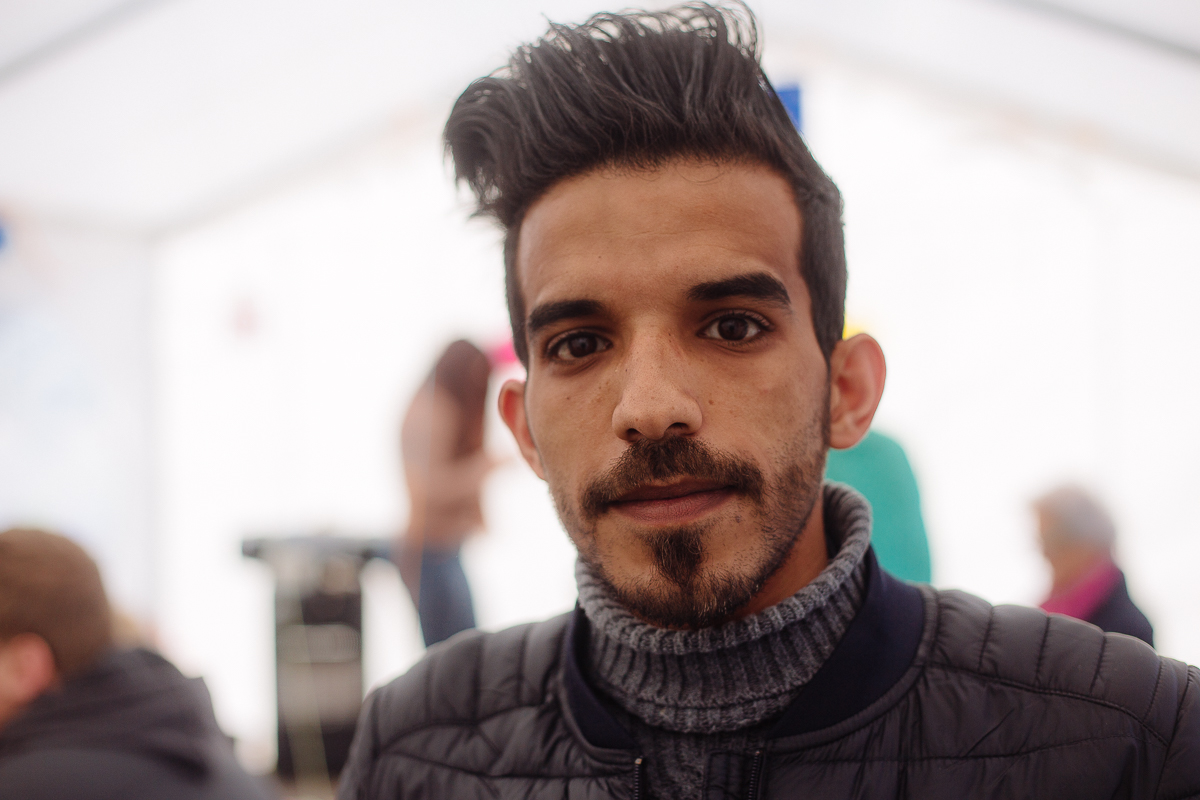 The text interview in English. Some stylistic corrections were made.
The text interview in English. Some stylistic corrections were made.
Please introduce yourself
My name is Abdulrazaq I’m 24 years old from Iraq, Baghdad
Tell about your life before you left your country?
My life in Iraq was normal, I had a job and was studying at the University of Baghdad, Department of Film, Television, and Arts. I was an activist in human rights organizations. At the same time, I was working freelance at TV, I made some short-length movies (documentary and drama).
What kind of circumstances made you leave your country?
I left the country for political reasons, I’m secular and I refused to have my country run like Iran or Afghanistan. The Islamic parties claim Islam but are like mafia. They destroyed Iraq, destroyed everything and brought us back to the old age. It created sectarianism and terrorism and brought fighting everywhere.
Why did you choose Finland?
I chose Finland because it is a peaceful country and a neutral state in policy. I arrived here at 7.10.2015
What is your current status in Finland?
At the moment I have a resident permit based on political asylum for 4 years. I am living in Järvenpää and I’m studying the Finnish language. First of all, I want to complete my studies of Finnish and studies in Art school. I want to continue my life here, working in the cinema industry.
Do you want anything else to share?
My family status is fine, both security-wise and financially. They are now living in US and Turkey
7. Anonimously
Extractions from the text interview in Arabic. English text is provided by a translator. The original text is at the end.
He has sent the photos of himself in a hospital, recovering from the burns. They are visible on the whole body. I did not include this imagery on my blog but I find it important to mention that his wounds are real.
Please introduce yourself
My name is Queaes Al-Musawi, I come from Iraq
What kind of circumstances made you leave your country?
I was being chased by militias and armed groups, and couldn’t stay or settle in Iraq, my country. I was kidnapped and a car exploded with me inside of it, since then I’ve been on the run from armed militias, ISIS and other similar groups like the 1920 Revolution Brigade.
A few nights after the car explosion, they came to kill me at the hospital where I was being treated, I ran away that night, and as a result, I have not been able to settle down with a constant job, or find a place to live long-term. I recognize what they look like and know some of their names and locations.
What is your current status in Finland?
I got the order to get deported from Finland on the basis that Iraq is now safe, they did not even hear me make my case about my status in Iraq and they did not ask about my personal story. If ever be forced to go back, I will kill myself to relieve my soul for this torment.
Do you want anything else to share?
This feeling of unsafety that is haunting me and my family, this fear of losing my life and the lives of the ones I love, the fact that my family is miles and miles away in Turkey, it is unsettling and is affecting my mental and physical health, I suffer from burns and shrapnel wounds and my mental state is unstable because of all the fear and violence that is surrounding me and my family, especially since we are not together anymore.
Original text
كنت مطارد من مليشيات ومجاميع مسلحة وﻻ استطيع البقاء والاستقرار في بلدي العراق بسبب انا تعرضت للخطف وتفجير سيارة ملغومة وانا داخلها وخرجت من هذا الانفجار مطارد ومطلوب للمجاميع المسلحة ( تنظيم القاعدة ) وجماعتها من كتائب ثورة العشرين والمليشيات وبعد الانفجار في ايام جاءوا الى المشفى لقتلي في الليل وهربت ومنذو ذلك والوقت انا ﻻ استقر في منزل وعمل وسبب مطاردهم لي . اني اعرف اشكالهم وحتى بعض اسمائهم واماكنهم . والسبب لعدم الاستقرار هو اني تزوجت هي فتاة احلامي وهي من ظائفة السنية وانا من الطائفة الشيعي. ﻻني ضد الظائفية والعنصرية واعرف ان الناس فيهم الجيد والسيئ وﻻ يجوز وضع الناس كلهم بيد واحدة هذا عمل عنصري وغير انساني وانا ضد العنصرية 3 . عدم الامان عن حياتي وعن حياة عائلتي ومطاردة المجاميع المسلحة والمليشيات لي ولعائلتي . والان عائلتي غادرت العراق الى تركيا 4 . وضعي الصحي والنفسي من سئ الى اسواء واعاني من اثار الحروق و الشظايا بجسمي وحالتي النفسية غير مستقرة خوف من كل مايحيط بي والخوف على عائلتي وهم الان وحدهم 5 . حصلت على قرار رفض من دائرة الهجرة والقرار يقول العراق امن الان . وانا لم اتحدث في قضيتي عن العراق وعن مايجري فيه انا قضيتي شخصية واذا جبرت على العودة للعراق اقتل نفسي ارتاح من هذا العذاب
From author
I have been on my photography course, covering the life of asylum seekers, for more than 3 months. When I fist took my camera to picture them, I did not think it would bring me to so such a long journey.
I met a lot of wonderful people and heard many life stories. I would like to thank everyone who shared the information and who has contributed to this post. Without you, it wouldn’t be possible.
I will continue covering the refugee crisis in my posts. Do you have suggestions for a new post? Let me know what you think.
With hope for peaceful resolution of the crisis,
Alexander.

